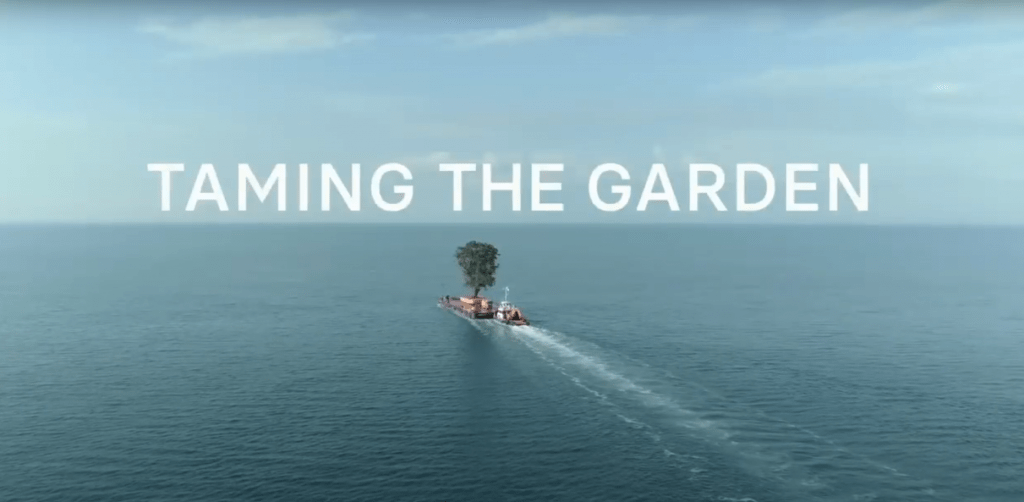Nini Gabritchidze was the author of The Dispatch. She is now a freelance journalist.
Lately, Georgians have been rushing to screenings of Taming the Garden, an award-winning documentary directed by Salome Jashi. The curiosity grew further after the Georgian Film Academy canceled the scheduled film events, a move believed to be another attempt at censorship from the country’s culture authorities.
The film depicts one of the strangest moments in the country’s recent history when large trees were uprooted in Georgia’s coastal regions to be transported by sea to a garden owned by Bidzina Ivanishvili, the Georgian billionaire seen as the country’s informal ruler.
The images of big floating trees that this process produced may surprise, captivate, or intimidate foreign audiences. But Georgians are very much used to the daily eccentricities of Georgian social and political life. The censorship controversy thus did the exact contrary to what the ban authors might have expected – the viewers flocked to screenings of an artsy documentary. But it would be wrong to take the censors’ view and reduce this piece of art to a single powerful man and his eccentric love of trees. Because in fact, the film offers a glimpse into many hidden dimensions of local struggles that many of us fail – or refuse – to see.
The documentary opens with captivating views as the camera leads into the mysterious depths of the green forests. Here, diminished under the big trees and incredibly massive machinery, the viewer finds people. These are mainly the local workers who were lucky to make a living on Ivanishvili’s strange passion, which they struggle to understand. The witty small-talk of those workers, as they reflect on the strongman’s undertaking with relaxing humor, is one of the best features the film has to offer. And with the roaring, disturbing sounds of the machines, it is the only narration the film has (or needs). These chats come and go, leaving you craving for more while the terrifying man vs nature images take over.
There are fewer trees as the film progresses – some of the ‘lucky’ ones are uprooted to be transported to the garden while others are cut – not large or rare enough, collateral damage of the gargantuan process. But there are more people who appear, including families who made a small fortune overnight by letting go of the rare trees in their orchards, and their neighbors.
And there is more conflict. A conflict of values and narratives while locals struggle to figure out whether they made the right choice by giving up those trees they grew up with – or was it someone else who made that choice for them? Have they gained more than they have lost? Should they feel thankful or angry about this unusual disruption of their routine? The film can leave the viewers conflicted as well, making them rethink the way they approach their own values and, more importantly, the values of others.
The images also provoke emotions that are hard to describe but still very relatable. For example, seeing the big brown void that the tree leaves behind, and people standing by as if exposed and robbed leaves one with that uncomfortable feeling from usual nightmares.
There is a lot more to see and contemplate, and the documentary will affect everyone intimately, individually. It offers different allegories to sociologists, environmentalists, or those who came for politics. And speaking of politics: aside from the much-anticipated power theme, the film captures a refreshing diversity of how things are processed by those at the receiving end of the deeply unequal power systems. It shows how the decisions made far away affect locals – or “the people” as the politicians often refer to them, whom the central political discourse has theorized, generalized, reduced to numbers, yet still failed to figure out or consider as individuals.
The documentary thus has the potential to bring some of the recent discussions – that have emerged and then quickly disappeared, as often is the case in the breakneck world of social media feeds and instant news – creating a rare space for much-needed social criticism as well.
But most importantly, the film tells us that we have yet to learn, how to see.
And in this respect, it offers very good lessons.

